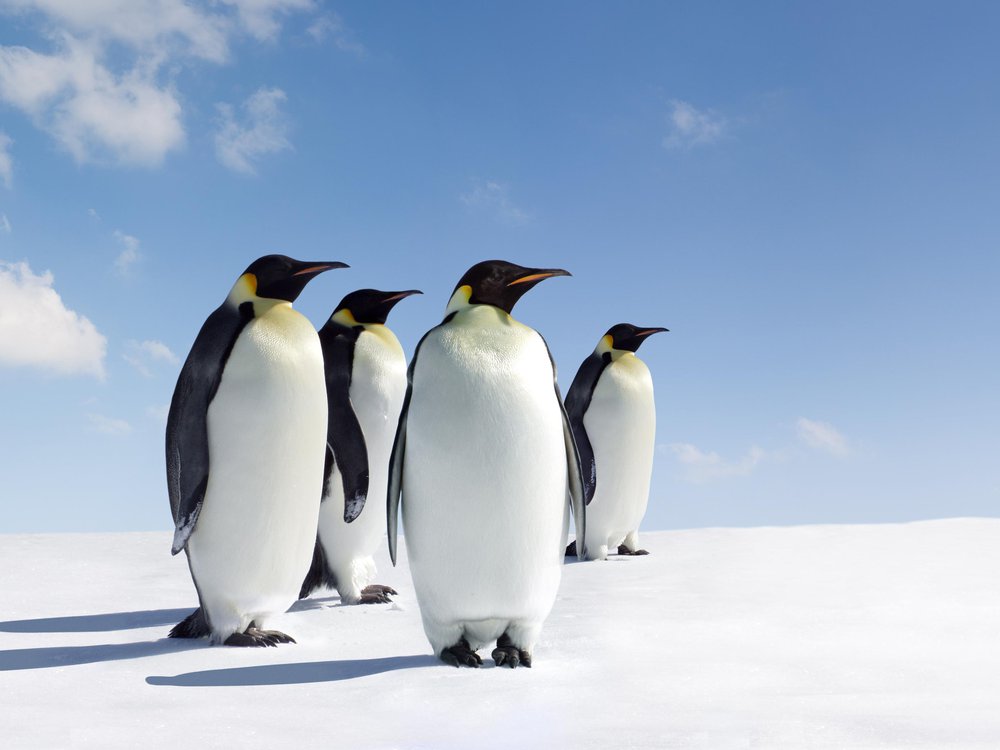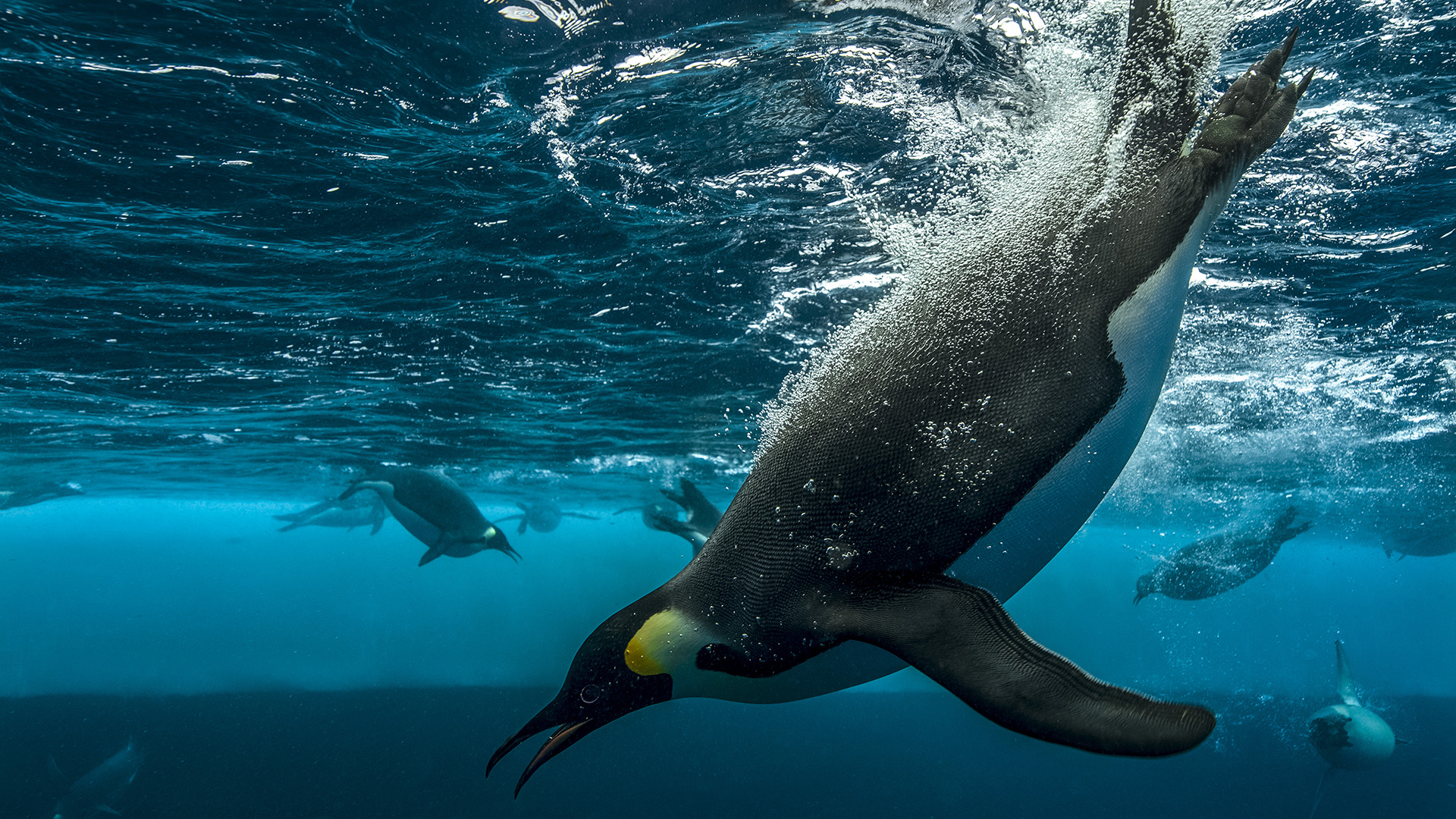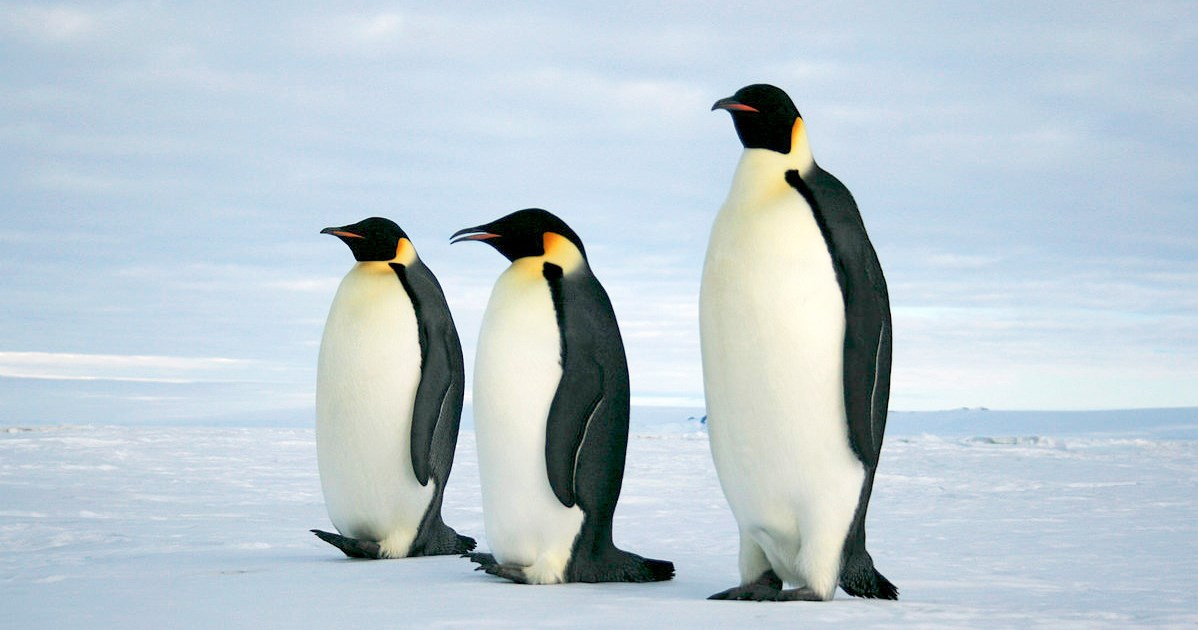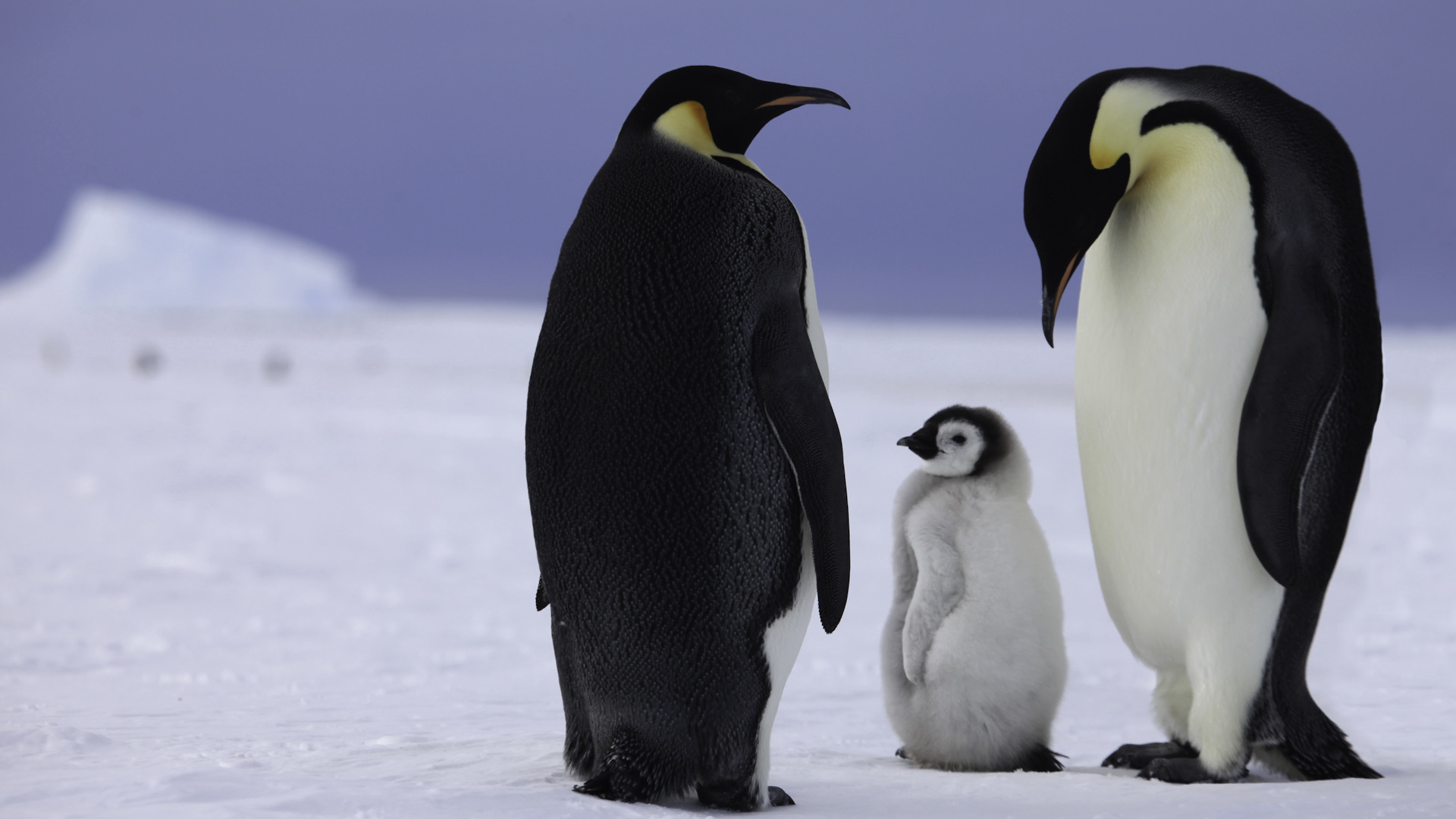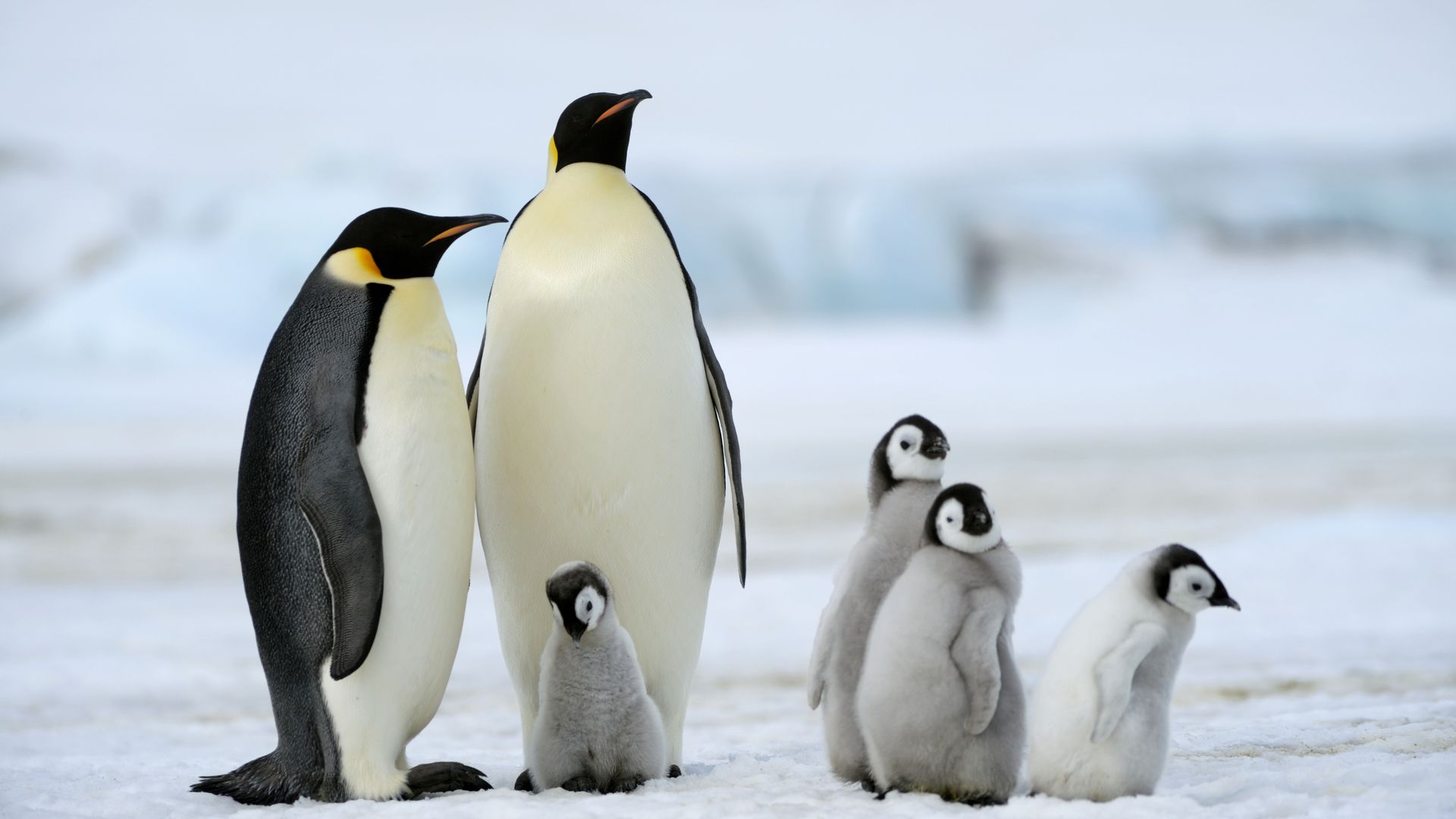STATUS
Near Threatened


Penguins employ physiological adaptations and cooperative behaviors in order to deal with an incredibly harsh environment, where wind chills can reach -60 degree Centregrade.
They huddle together to escape wind and conserve warmth. Individuals take turns moving to the group's protected and relatively toasty interior. Once a penguin has warmed a bit it will move to the perimeter of the group so that others can enjoy protection from the icy elements.
Emperor penguins spend the long winter on the open ice-and even breed during this harsh season. Females lay a single egg and then promptly leave it behind. They undertake an extended hunting trip that lasts some two months! Depending on the extent of the ice pack, females may need to travel some 50 miles just to reach the open ocean, where they will feed on fish, squid, and krill. At sea, emperor penguins can dive to 1,850 feet-deeper than any other bird-and stay under for more than 20 minutes.
Male emperors keep the newly laid eggs warm, but they do not sit on them, as many other birds do. Males stand and protect their eggs from the elements by balancing them on their feet and covering them with feathered skin known as a brood pouch. During this two-month bout of babysitting the males eat nothing and are at the mercy of the Antarctic elements.
When female penguins return to the breeding site, they bring a belly full of food that they regurgitate for the newly hatched chicks. Meanwhile, their duty done, male emperors take to the sea in search of food for themselves.
Mothers care for their young chicks and protect them with the warmth of their own brood pouches. Outside of this warm cocoon, a chick could die in just a few minutes. In December, Antarctic summer, the pack ice begins to break up and open water appears near the breeding site, just as young emperor penguins are ready to swim and fish on their own.

STATUS
Near Threatened

SCIENTIFIC NAME
Aptenodytes forsteri

POPULATION
Only 595,000 left

LENGTH
1.1 to 1.3 meters

WEIGHT
20 to 23 kgs

HABITAT
ARTIC POLES
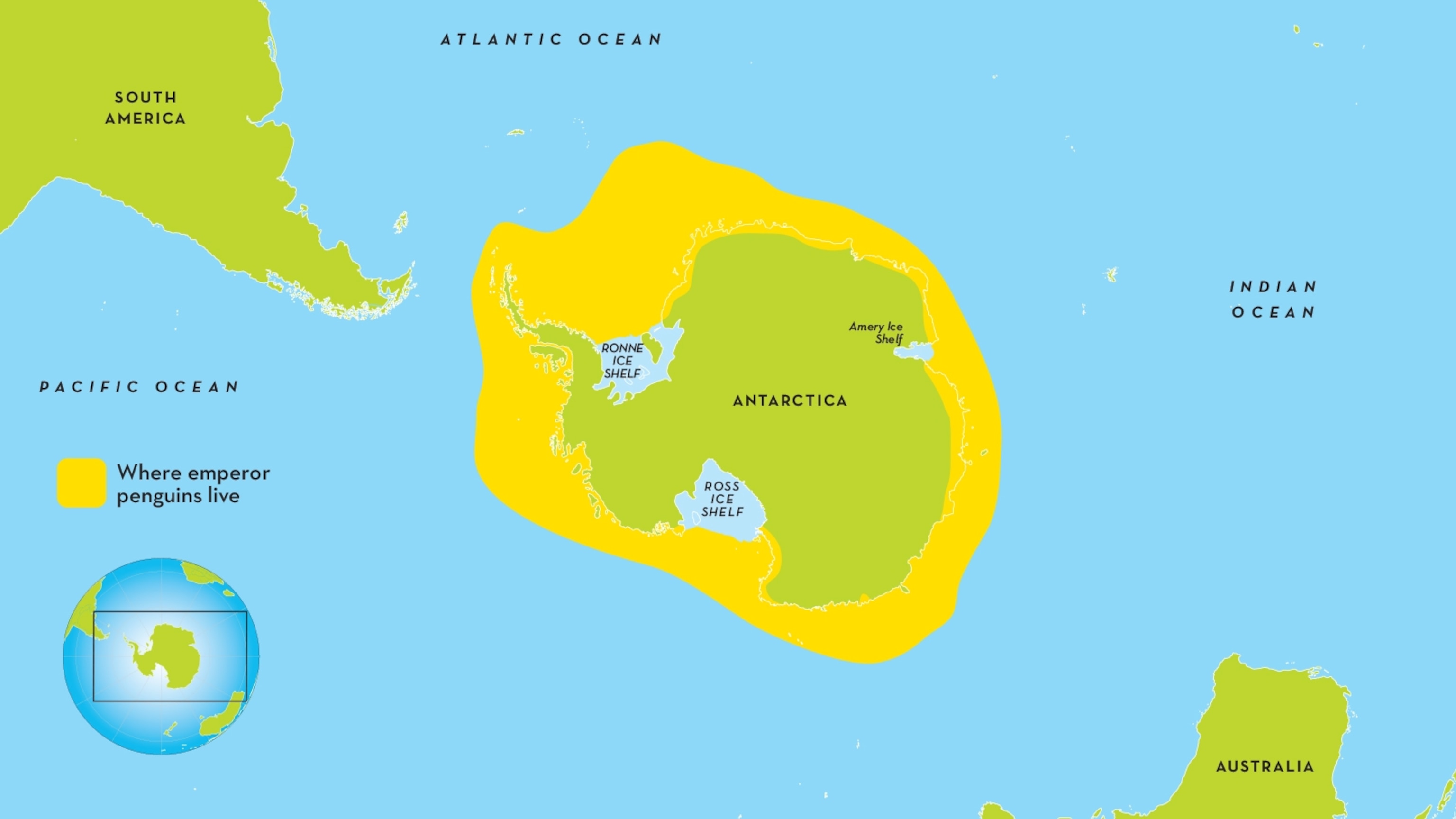
Emperor penguins are a vital part of the Antarctic food chain - they eat creatures like squid and small fish, and are an important source of food for predators like leopard seals and large sharks.
Emperor penguins hunt for fish and other marine life in the open seas or in cracks in the ice. They can dive to depths of almost 550 metres (1800 feet), staying underwater for almost 20 minutes at a time.
Emperors are the largest of all penguins-an average bird stands some 45 inches tall. These flightless animals live on the Antarctic ice and in the frigid surrounding waters.
Emperors have their distinct tuxedo look because, while swimming, their white bellies camouflage them against the light above, and their dark backs camouflage them against the depths below.
Emperor penguins are the only penguin species that breeds during the Southern Hemisphere (austral) winter.
